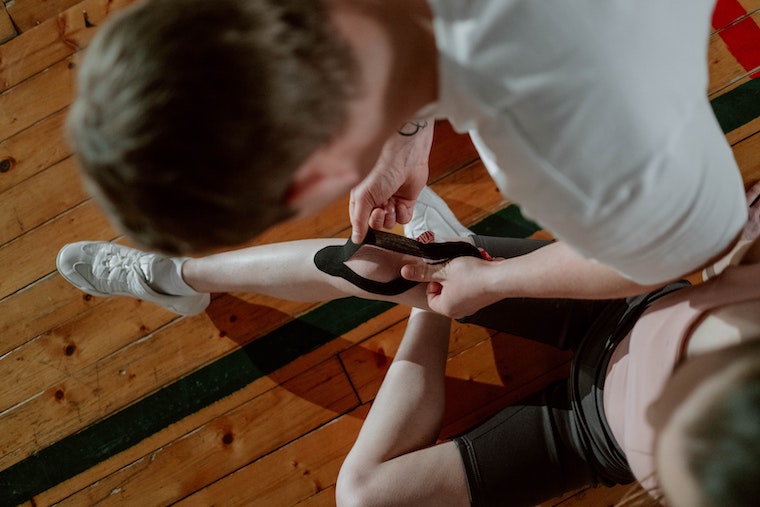
How to Strap a Sore Knee
You never really think about your knees, do you? That is, until one starts hurting. Then, all of a sudden, it’s all you can think about! A sore knee can affect you whether you’re sitting, standing, or walking, so sometimes it can feel like you can’t escape it. But what if we told you there is a way? Strapping a sore knee can stop pain in its tracks, so it’s best to know how to strap a sore knee properly.
This blog explains how to strap a sore knee so that the next time knee pain strikes, you know what to do to minimise pain and further damage. For further information or personalised advice, contact our team at Northern Spinal today.
Causes of Knee Pain
Did you know that the knee is the largest joint in the body? For a body part you probably don’t pay much attention to, it really does its share of the day to day heavy lifting! Since the knee plays such a large role in keeping us on the go, it’s no surprise that there’s such a long list of injuries that can affect them.
If you need to know how to strap a sore knee, it’s likely you may have one of the following conditions:
-
- Fracture or dislocation
The knee is made up of four bones, and any one of them can be fractured or dislocated. This typically happens if you’ve had a fall, a car accident, or been involved in another incident that caused a hard knock to the knee. You may also have abnormal knee structure, which can cause dislocations on its own.
-
- Ligament tear
If you’re into sports— yes, watching counts!— you probably know all about these. You’ve got your ACL (anterior cruciate ligament), PCL (posterior cruciate ligament), MCL (medial cruciate ligament), and your collateral ligaments. Any of these can tear which can cause a lot of pain, however ACL injuries are the most common. These are usually caused by changing direction too quickly or landing in an unexpected position.
-
- Meniscus tear
Meniscus tears usually come from a sudden and/or awkward movement that causes you to twist or pivot. When the rest of your body wasn’t expecting the movement, this can result in a meniscus tear.
How to Strap a Sore Knee
Whatever reason your knee hurts, and wherever the pain is in your knee, strapping it can improve its stability. It also helps to minimise pain and excessive range of motion, helping to prevent further injury.
Knee Ligament Support
To strap a sore knee for knee ligament support:
- Stand up straight and place a 38mm roll of tape under the heel of the leg with the sore knee.
- Attach anchors above and below your knee with 75mm strapping tape.
- Attach another two anchors at the top and bottom of your leg with 38mm strapping tape.
- Make two diagonal straps with firm tape. For the first strap, start from the outside of your calf, pass it across the kneecap, and attach it on the inside of your thigh. For the second strap, do the opposite: Start from the inside of your calf, go across the kneecap and attach it on the outside of your thigh.
- Repeat this several times to increase the level of support the tape can give you.
- Apply two vertical straps between the top and bottom anchors on the inside of your leg.
- Provide extra compression and protection by overwrapping with the bandage using a spiral with a figure 8 at your knee joint, completely covering the taut tape.
Patella Tracking Support
To strap a sore knee for patella tracking support:
- Sit with your leg with the sore knee stretched out in front of you.
- Using 75mm strapping tape, secure one anchor across the front of your kneecap.
- Attach another anchor over the top but further towards your hips slightly.
- With 35mm strapping tape, secure two horizontal strips to one side of the knee. Pull them and your patella gently towards the correct ligament— this can be across, up, or down.
Knee Pain Still Got You Down?
If you’ve strapped away and found that knee pain is still hanging around, it may be time to get in touch with a professional. At Northern Spinal and Sports Injury Clinic we treat knee pain with our wide range of services, from osteopathy and physiotherapy to orthotics and podiatry. To have one of our experienced team assess and treat your sore knee, contact Northern Spinal today.



